Хаас за Испания
Ромен Грожан:
With tires and tire management having dominated much of Formula One’s double-stint at Silverstone – does that frustrate you as a racing driver or is it simply part of the package in modern Formula One?
I guess it is part of modern Formula One, but if you ask me what I think of it, yes – it’s a bit disappointing. It’s not that the tires wear, that’s understandable, the more you push the more you wear the tire. I think the disappointing part is that you need to manage the temperature for overheating, therefore you have to drive slower to keep the grip, so you reduce your lengths. I think the driver should have an impact on the tire wear, for sure, but not so much on the performance of the tires because they overheat.
Is your Q2 qualifying performance from the 70th Anniversary Grand Prix the highlight of your season to-date? What was the key to unlocking those qualifying laps both in Q1 and Q2 in the VF-20?
I guess the key to getting the laps in both in Q1 and Q2 was to keep going in the direction we worked on at the British Grand Prix. I didn’t have a good qualifying session, but I thought we had the pace to go into Q2. I was really hoping at the second race weekend I was going to do the job – I did, and the car felt good. The set-up direction we took worked really well for me; I was happy with it. I have a much better front end on the car, and that’s really helping me to improve qualifying. So, yes, it’s a highlight of the season, and I’d say in both races I was performing as well as I could with the VF-20. The Silverstone races were really good.
Is there value in going to Spain now and comparing the data from the VF-20 with what was learned in pre-season testing in February, or does the temperature difference racing there in August simply negate any possible comparison?
I think we need to see the weather, but it’s most likely that it’s going to be hot. It will therefore be very different from winter testing. The car has matured, and we’ve evolved from where we were. I guess we’ll have a look, just out of interest, but my feeling is that it’s going to be very different.
What are your Spanish Grand Prix highlights from your five point-scoring performances there in Formula One?
I think it’s from 2012 – where I scored my only fastest-lap in a grand prix in the Lotus E20. It was good race, I really enjoyed it. 2014, I had a terrible car, but I managed to score points. I’ve had some good races there. We all know the track very well, but obviously we always try to do the best that we can.
Кевин Магнусен: The 70th Anniversary Grand Prix at Silverstone once again allowed you to demonstrate your prowess launching off the line as you gained four spots on the opening lap. What’s the key to a great start and why do you think you’re so good at it?
My starts this year have been very good. I’m taking a lot of joy on the first lap trying to make up a lot of positions. Naturally, with our qualifying performance lacking, it’s crucial to make up for that and the opening lap is the best opportunity to do that. I’m putting a lot of emphasis on getting a good start and taking every position that I can on the first lap. It’s just about being focused and alert on the lap to be able to see the gaps and the opportunities. Then you go for it.
With tires and tire management having dominated much of Formula One’s double-stint at Silverstone – does that frustrate you as a racing driver or is it simply part of the package in modern Formula One?
The fact that we had softer tires with higher degradation last weekend was a good thing, I think, overall. Of course, for myself, I had a lot of blistering and graining – basically my tires fell apart and I couldn’t finish the race. The blistering was so bad at the end it was becoming a safety issue; therefore, we retired the car. But, if we could have these soft tires without the degradation or any safety issues, that would be great. I think one-stop races are less interesting, having more stops in a race offers more variables in strategies and it makes it more exciting racing.
Is there value in going to Spain now and comparing the data from the VF-20 with what was learned in pre-season testing in February, or does the temperature difference racing there in August simply negate any possible comparison?
I think it’s going to be interesting. We looked stronger in winter testing in Spain than we’ve been in these first five races. Hopefully that will be the case again when we get back to Barcelona. I’m hoping we can qualify slightly better and have better pace. It would be great to get a few more points if we could. We’re going to go for it in Barcelona.
You’ve had back-to-back point-scoring finishes for Haas F1 Team in Spain – what are your Spanish Grand Prix highlights?
I would say Spain’s been one of the tracks where we’ve been fairly successful as a team. Naturally I’m looking forward to going back there with those memories and good experiences. I’m hopeful we continue that form in Barcelona and get another point scoring finish. It’s not a given, and we’ll have to work hard to bounce back from the tough races we had at Silverstone.
Гюнтер Щайнер: The 70th Anniversary Grand Prix at Silverstone had a couple of highlights for the team in Romain’s Q2 performance on Saturday and Kevin’s trademark getaway at the start of Sunday’s race. Are those things you feel the team can build on as the season continues to unfold?
How we are performing at the moment, I think this is the best we can get out of it. Setting some highlights is good for the team and it’s good for the fans – they can still see that we’re there and we’re fighting every moment of a weekend. Romain’s lap in Q1 qualifying to get into Q2 was fantastic. Kevin’s made a lot of good starts this year. In the future we just need to make sure we have some good races.
With tires and tire management having dominated much of Formula One’s double-stint at Silverstone – is that simply part of the package in modern Formula One racing, is it now a skillset which young drivers need coming up through the ranks?
The tires are obviously the dominating factor now, but not only now, they were over the last years. It’s always been how well you can use your tire. I think it’s the same now already in the feeder series, in F2 and F3, the young drivers need to learn how to manage these tires. In my opinion tires should not be the main focus in racing. They should be part of racing, but not the main focus. Hopefully, by introducing the new tire in 2022 – the 18-inch wheel, things change.
Is there value in going to Spain now and comparing the data from the VF-20 with what was learned in pre-season testing in February, or does the temperature difference racing there in August simply negate any possible comparison?
Having data is always very good, and we’ve got a lot of data from Spain from both testing and racing there. But referencing the previous questions, the tires are a very big factor in what you’re doing. The temperature, for sure, plays a big role in how you can use your car. The good thing is we can go back and compare our performance, and what we achieved in February, to what we’re achieving now. So, it’s good to have something to compare. I’m looking forward to it.
It was pre-season testing in Spain back in 2016 that Haas F1 Team debuted its VF-16 prior to its first season in Formula One. What are your memories of being at the track in February 2016 and preparing to show the motorsport world the fruits of your labors putting a new Formula One team together?
I think, without a doubt, it was a big moment for myself and the team, because putting a complete new Formula One team together in the way that we did it, it hadn’t been done in a long time. It was one of the highlights of my life, and the highlight of Haas F1 Team because it was our first time on the circuit. It’s always good to back there and think about that moment when we rolled out of the garage – it always gives me goosebumps. I always remember that moment each year when we arrive in Barcelona.
The Spanish Grand Prix has often proved to be a happy hunting ground for the team, including last year’s double points score with Romain and Kevin. What are your highlights from racing there and what do you think is on offer for the team this weekend?
Last year, with the double points-score, having had a bit of a difficult season up until then, it was very good. In another way it maybe wasn’t so good as we believed in our upgrade, which then ultimately, we put back on the shelf and went back to the Melbourne spec. Getting the points last year was a nice moment, but maybe for going forward in the season the package was the wrong thing to do. You learn out of all this and I hope we don’t make that mistake again. For this weekend, hopefully the racetrack suits our car, it’s not such a power sensitive circuit. Hopefully we can get something done, it will be difficult like every track this year, but it looks a little bit better for us. We’ll find out on Saturday and Sunday this week.


















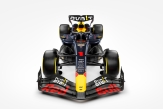
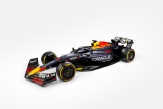

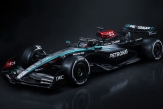
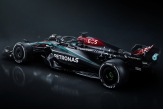


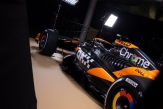

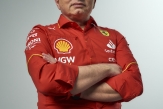
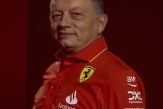
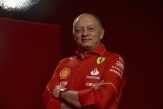

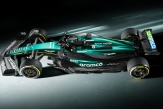

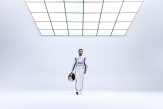


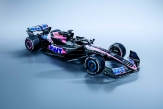
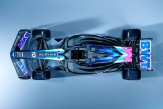




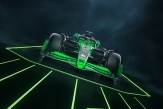
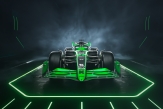
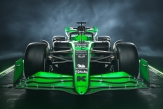

15/04/2024 от Огнян Тенчев (drJeckyll), няма коментари